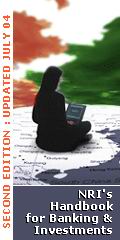|


|
World’s High Net Worth Population Now Stands at 9.5 Million-
Singapore and India with Greatest HNWI Growth
Driven by a strong global economy, the wealth of the world’s high net worth individuals (HNWIs1) increased 11.4 percent to US$37.2 trillion in 2006, according to the 11th annual World Wealth Report, released on 27th June 2007 by Merrill Lynch and Capgemini. The number of HNWIs in the world increased 8.3 percent in 2006 to 9.5 million and the number of ultra high net worth individuals (Ultra-HNWIs2) grew by 11.3 percent to 94,970.
Emerging economies proved resilient, with continued growth in their HNWI populations and solid investor cash flow to riskier corners of the market. The largest growth of the HNWI population occurred in Singapore and India, where the increases over 2005 were 21.2 and 20.5 percent, respectively. The Report suggests that economic growth will slow in 2007 as mature economies grow more moderately.
Global Economy Hits New Heights
Real GDP and market capitalization growth rates – the two primary drivers of wealth generation – accelerated through 2006, which helped to increase the total number of HNWIs around the world as well as the amount of wealth they control. The realization of economic gains on par with those of 2003 and 2004 was led by emerging markets that continued to outperform the rest of the world. China and India, for example, sustained real GDP growth rates of 10.5 percent and 8.8 percent respectively, in 2006.
Market capitalizations grew rapidly in Europe, Asia-Pacific and Latin America, driven by strong corporate profits, IPO activity and ongoing foreign investment. Although performance varied across the world, almost all indices posted gains. For example, the Dow Jones World Index grew by 16.4 percent in 2006.
“This year’s Report found that the number of wealthy people, and the amount of wealth that they control, continued to increase in 2006, with extraordinary wealth creation in Singapore and India,” said Robert J. McCann, president of Merrill Lynch’s Global Private Client Group. “The level of wealth creation around the world provides a tremendous opportunity for wealth management firms, and success will go to the firms that offer a service model that meets the ever-changing needs of today’s sophisticated clients.”
Emerging Economies Vault Ahead of the Pack
The BRIC nations (Brazil, Russia, India and China) continued to play increasingly important roles in the global economy in 2006. China and Russia were among the top ten countries with the fastest growing HNWI populations. China’s HNWI population grew by 7.8 percent and Russia’s increased by 15.5 percent. Brazil and India also showed continued strength based on domestic private consumption and competitive service and manufacturing sectors.
Latin America saw real GDP growth of 4.8 percent in 2006, and lured substantial foreign direct investment. The region’s HNWI population jumped by 10.2 percent in 2006 as it continued to outperform the global average of 8.3 percent.
The Middle East was the only region to see a dispersion, rather than consolidation, of wealth. The global demand for oil in 2006 helped increase the number of HNWIs by 11.9 percent, but a correction in an overvalued stock market pulled down market capitalization rates, slowing total wealth accumulation.
“The globalization of wealth creation has accelerated,” said Bertrand Lavayssière, Group Director, Capgemini Financial Services. “If 2005 was characterized by a flow of investment to international funds from HNWIs, 2006 ushered in a new era whereby emerging economies leaped ahead with direct foreign investment, strong domestic demand, and hefty stock market gains.”
Real Estate’s Allure Deepens
In 2006, HNWIs shifted more money into real estate investments, at times liquidating some of their alternative investments to fund these real estate opportunities. Global direct real estate transaction volumes reached US$682 billion in 2006, up 38 percent from 2005. Real estate investment funds, or REITs, performed strongly to create an overall preferred investment channel. While alternative investments remained a key component of HNWI portfolios, overall HNWI allocations to those investments dipped in 2006.
In the Report’s first breakout of philanthropic giving, it found that HNWIs, led by the ultra-wealthy, gave an estimated US$285 billion to philanthropic causes in 2006.
Finally, the Report found that the global perspective of HNWIs continued to increase in 2006, driven by an expanded awareness of international developments, better international fund performance and risk mitigation.
Future Growth Looks Moderate
Looking ahead, mature markets like the United States are expected to act as an anchor on the world economy as moderate growth rates settle in. With many central banks tightening monetary policy, the period of high liquidity that has so stimulated recent growth may soon come to an end. Finally, the growth rates of Asia and Latin America are expected to ease back as global demand slows.
(This is Press Release of Merrill Lynch and Capgemini)
CLICK FOR MORE FEATURES & STORIES
|
|


|





